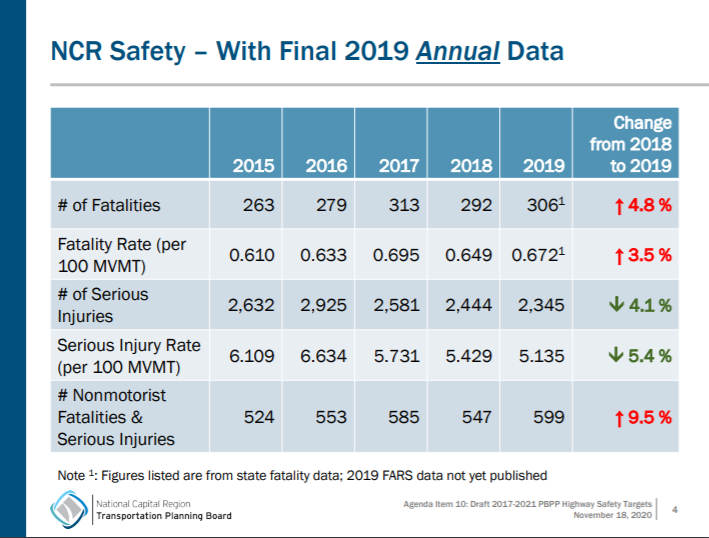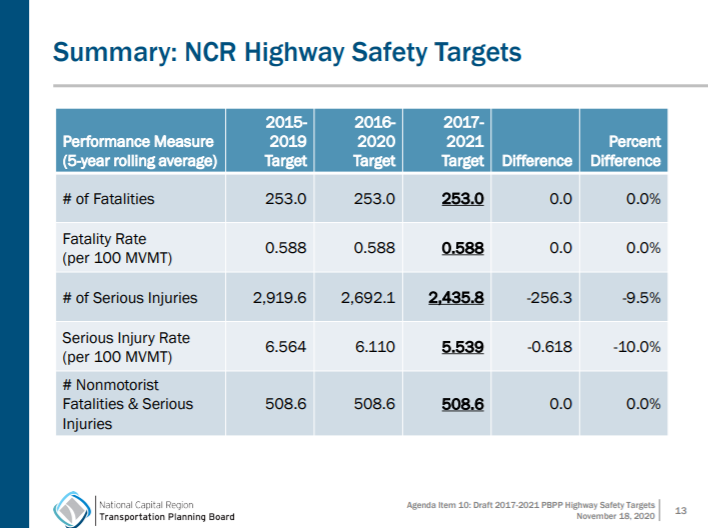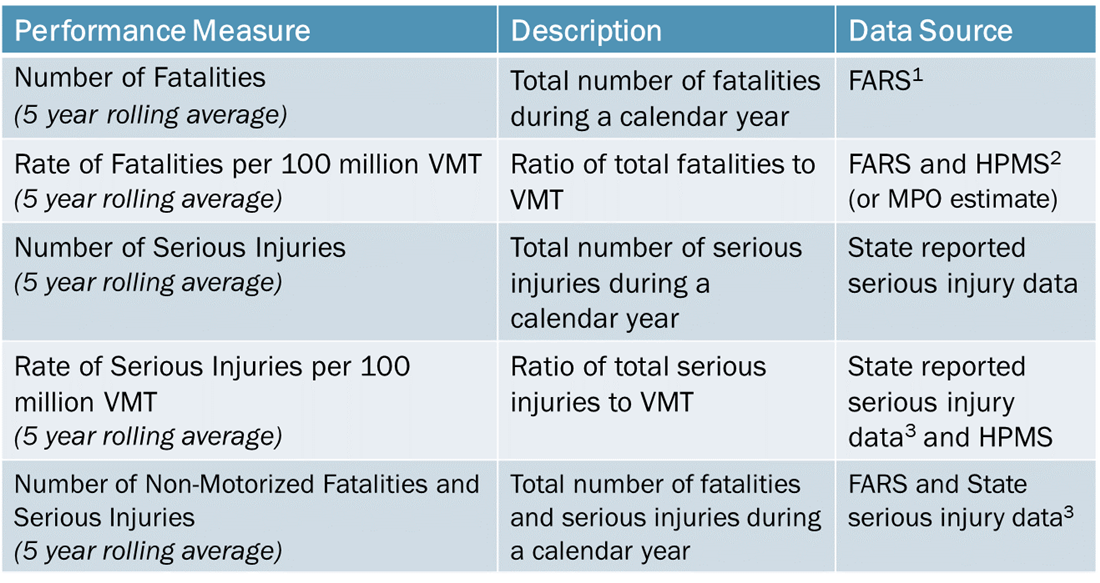The TPB will take up its fourth set of federally required roadway Safety Targets at its December meeting. Since safety was one of the areas the TPB focused on this year, now is a good time to explain what these targets are used for and to take a look at the facts and figures behind them
In 2018, as the TPB was adopting the initial set of federally required safety targets, board members acknowledged the region had to do more to address safety. That acknowledgment led to a regional safety study, a set of recommended actions, and the establishment of a new safety program to support the region. It is now time to adopt the fourth set of targets for the region and it is a good time to look at the facts and figures behind our safety challenges. Understanding and tracking key data helps the board, member agencies, and staff address our roadway safety problems. As part of Performance Based Planning and Programming rules, the federal government requires Metropolitan Planning Organizations (MPOs) like the TPB to collect and report data about roadway safety for the region, and set data-driven roadway safety targets.
The TPB uses this annual target setting process to review recent safety trends, assess how the region is doing, and set the data-driven safety targets required by federal regulations. Here’s a little explanation about what is required, how the TPB creates its targets, and the next steps in the process.
Recent Safety Trends
These roadway safety targets must to be data-driven, so let’s take a moment to look at the data. In 2019 there were a total of 306 roadway fatalities in the region. An increase compared to the 292 fatalities in 2018. Looking at serious injuries, the region did a little better with 2,345 in 2019 compared to 2,444 in 2018. Tracking these trends shows that there is still a lot of work to do to make the region’s roads safer.

Based on this data, the recommended fatality, fatality rate, and nonmotorist targets for 2020 are the same as the targets approved by the TPB last year. New, more aggressive targets were proposed for the serious injury and serious injury rate measures.

What MPOs Have to Report
Now let’s go over the federal requirements for what to measure and why. Federal rules require states as well as MPOs like ours to report on safety performance every year and set safety targets. This requirement is intended to help regional leaders make decisions that improve safety at a regional scale.
This means that MPOs and states must report the number and rate of both fatalities and injuries on the region’s roads. They are also required to report the total number of pedestrian and bicyclist fatalities plus serious injuries. The absolute numbers help identify trends, while looking at rates helps account for underlying VMT growth.

Realistic not aspirational
It’s important to remember that federal regulations require these safety targets to be realistic and data-driven, not aspirational. Data-driven targets allow the region to better understand how its efforts may affect the numbers of serious injuries and deaths on our roads. They can also highlight how to invest resources towards interventions that have the most potential to reduce deaths and serious injuries.
the TPB undertook a study beginning in June of 2019 to better understand the causes behind the unacceptable numbers of people being killed and injured and to propose a set of recommendations the TPB can take to improve roadway safety, Findings from the study were reviewed by the TPB earlier this year and in July the board adopted a resolution that included an extensive set of recommended actions for agencies to improve road user safety. The resolution also established and funded a new roadway safety program to help agencies develop projects, programs, and policies to reduce deaths on our region’s roads.
Learn more about the TPB's Roadway Safety study and program
A multi-state region needs a hybrid approach to target setting
The recommended roadway safety targets are developed using a process that leverages the safety target setting approaches used by each of our three member states.
TPB staff apply Maryland’s target setting method to the Maryland portion of the region and Virginia’s target setting method to the Virginia portion of the region. The resulting Suburban Maryland and Northern Virginia sub targets are then combined with the District of Columbia targets to create overall targets for the region. Finally, if this process results in a target that is higher than what the TPB previously set, that target is capped at last year’s level.
Next steps
TPB staff are taking feedback from the board and the TPB Technical Committee. Next, the TPB will be taking up these targets for approval at its December 16 meeting.